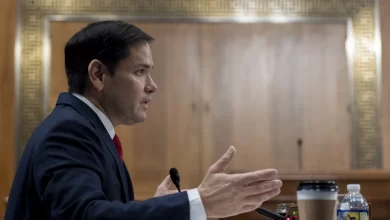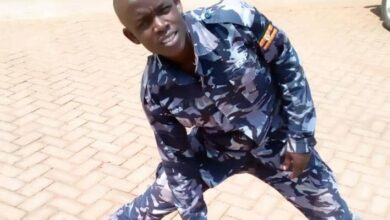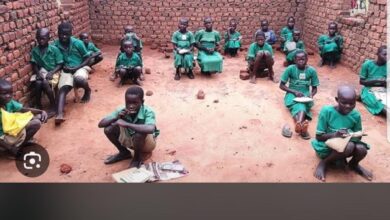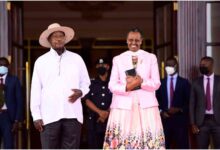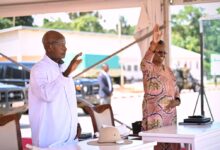The Military Capture Of Uganda’s Civic Space Yesterday And Today
Therefore, The Military Capture Of Uganda’s Civic spaces Combined with The Revamping And Spread Of The Grass Culture all over the Country Is The Most Dangerous Threat Facing Uganda Today And Tomorrow. There Is Need For Civic Action to Save The Country.
Uganda Today Edition:The Military Capture Of Uganda’s Civic Space Yesterday And Today
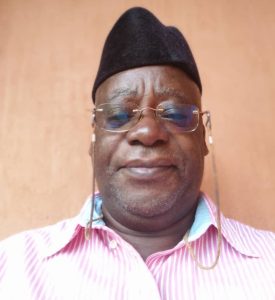
By Oweyegha-Afunaduula
23rd March 2024
Uganda, like any other country in the world, has many spaces that are or should be occupied by different groups of people to make the economy dynamic in an interconnected manner.
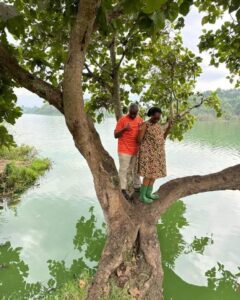
Let me name some of these spaces: military space, political space, judicial space, legislative space, executive space, social space, cultural space, environmental space, academic space, intellectual space, ecological space, military space, economic space, educational space, agricultural space, fisheries space, health space, business space, police space, et cetera. All the spaces, except the military space, are necessarily civic spaces.
Civic spaces are where civilians manifest themselves in diverse dimensions to make the economy of a country tick. Let me define some of these civic spaces for you:
- Intellectual space is the civic space containing, for example, knowledge, ideas, concepts, understanding and scholarly thoughts
- Political space is where civil society manifests in form of decision-making, choice of leaders, democratic struggles, legitimization of leadership and governance, building citizenship, identity, ownership, freedom and power balancing.
- Judicial common space is where both higher and lower judges administer justice, preferably without interference from other arms of government (legislative and executive.
- Legislative space is where elected members of Parliament or parliament-like bodies meet occasionally to make laws, consider policies designed by the executive and, among other things, monitor whether government is functioning properly.
- Executive space is where political leadership on virtually everything in the economy emanates from, particularly the policies. When leadership and governance succeed or fail the explanation is the executive
- Social space is physical or virtual space such as a social center, online social media, or other gathering place where people gather and interact.
- Cultural Space includes all arts presentation spaces. These include but are not limited to museums, galleries, live theatres, cinemas, bookstores and record stores, live music, drama, dance. It is where indigenous peoples practice their diverse culture, including agroecology, which is traditionally the foundation of their food security and survival
- Agricultural space provides the goods and services to meet human survival and development through the diversified utilization processes (e.g., Long, et. al., 2022)
- Academic spaces are platforms and spaceswithin universities where students, lecturers and other actors interact to peruse their academic business/interests. In strictly disciplinary structure and function, academic spaces do not cross borders. Those in the different spaces are foreigners to those in other spaces so that the universities are centres of foreigners who only come together during graduation.
- Environmental space is the amount of any particular resource that can be consumed by a country without threatening the continued availability. In the thinking that defines environment as everything, environmental space includes all the other spaces, including the military
- Ecological space may be looked at as where different niches of different species of living things are congregated allowing coexistence to exist and manifest.
- The military space is where the people that use the gun and other offensive weapons, ostensibly to protect the borders and the economy of the country from disruptions by perturbations from outside.
- The police space is where the internal security of a country is both mediated and ensured.
It is, however, a stark fact that in Uganda, there has been militarization of the different civic spaces to such a tune that 62 years since independence the civic spaces have been penetrated by the military, more today than yesterday. The militarization process has proceeded simultaneously with the foreignization of both the military and the civic spaces. Terms such as independence, emancipation and freedom are used just to conceal the truism that the civic spaces are polluted by military choices, practices and actions for the benefit of the military leaders and the politicians that are linked to them; of course, at high cost to the taxpayers. Increasingly the beneficiaries are either foreigners or those who have foreign origin but because of access to power now enjoy everything: power, authority, citizenship, nationality sovereignty and identification as Ugandans.
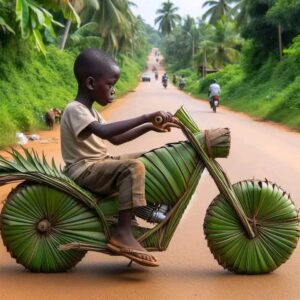
It is not difficult to discern the foreignization of the military because the majority of those who took arms against the civilian government of Apollo Milton Obote and Tito Okello between 1981 and 1986 were mostly refugees, some of whom ended up forming an intra-politicomilitary group called Rwandese Patriotic Front/Army (RPF/A) within the National Resistance Movement/Army (NRM/A).
As we came to know soon after the overthrow of the Juvenal Habyarimana in Rwanda, the combatants of the NRM/A that remain in Kampala after capturing power on 25th January 1986 joined their colleagues that weaned off as RPF/A to capture power in Kigali. In fact, during the first anniversary of the capture of power in Kigali, many combatants who remained in Kampala boasted of the role in the rebellion in Rwanda. They more or less help their kith and kin to capture power in Kigali because they were indistinguishable ethnically.
We now know that the people who command the army and police and dominate in the various civic spaces are ethnically-related. It is not a concealed fact. It is an example of misuse of power and abuse of the intelligence of Ugandans, their independence, citizenship, nationality and sovereignty.
The majority of the men and women in command positions in the army and police were refugees in Uganda long before the NRM/A captured the instruments of power through the barrel of the gun.
They had tried soon after the independence of Uganda to attack Rwanda to overthrow the first independence government of Kayibanda in Rwanda. They mobilized Tutsi refugees but Obote himself intervened to constrain them. He even moved refugee camps farther away from the Uganda-Rwanda border. The refugees never forgave Obote. They even kept on projecting him as the villain from their vantage positions in government and the military. Because they captured power when the people were tired of Obote, it was easy to use propaganda to convince the vulnerable indigenous Ugandans that all the killings in Uganda, especially Luwero Triangle, were the work of Obote and the army he inherited from the Uganda National Liberation Front (UNLF) government. Yet we know that guerillas must kill, destroy and even steal to cause disaffection of the population especially with people in power and authority or a system of control. This is what the NRA did in the Luweero Triangle. This is what Joseph Kony’s LRA did in Northern Uganda and Teso. And this is what the so-called Allied Democratic Forces (ADF) has been recklessly doing in Uganda and the Democratic Republic of Congo since 1996. Both the rebels and the government must design their propaganda in such a way that they can convince the people, who are the victims of the rebels that however long it takes victory is theirs. Unfortunately, where guns are ever fired no meaningful development is taking place and people are dying.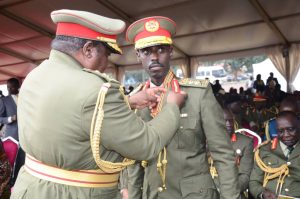
It is no longer a secret that President Tibuhaburwa Museveni despises Uganda’s civilians who depend directly on the land for their livelihoods or have origins in the land based indigenous groups of Bantu and Luo. Naturally he is more attracted to the nomadic pastoral communities, but not those who are not Tutsi-Hima. He has made sure that virtually all institutions of government in all civic spaces and non-civic spaces (army, police) are predominantly governed by people of Tutsi-Hima ethnicity. People from other ethnicities are left in specific positions to serve second fiddle to these ones.
This explains the growing dissatisfaction among the population with the NRM government. Many perceive that peace and security are not for all, but a few specific families; that for the rest these virtues are either in the hands of the people themselves or God in partnership with Nature.
Since I am an environmentalist who believes and has taught generations of students that environment is everything, it is the militarisation of the environment that has most attracted my attention.
The environment, in all its interacting and interconnected dimensions (i.e., the ecological-biological, the horticultural, the socioeconomic and the temporal) has recently been extensively militarized with numerous nomadic pastoralists grabbing the land and ecologies of the traditionally settled communities of Bantu and Luo. The grabbing is done either with guns and pistols carried by the nomadic pastoralist or soldiers securing them against the owners of the land. There have been reports in the media that some soldiers have used their military advantage to grab people’s land ecologies.
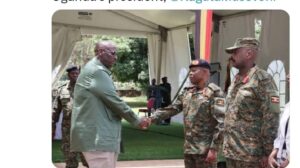
General Salim Saleh who by blood is a paternal uncle to Muhoozi presided over a military function yet he is already retired from the army. These and many more bizarre maneuvres point to one thing that has very often been echoed by president Museveni and his son, both severally referring to the national army as “my army”.
When we are talking about climate change and the current heat waves that characterise our environment today, we are not mentioning the critical role of the soldiers and the nomadic pastoralists in the destruction of the environment to satisfy their alien interests. Forests have been opened up and disconnected from the biocultural landscapes of the indigenous peoples who value them as ecological and cultural resources, and in so doing protect and conserve the environment.
The capacity of the environment both as an outdoor hospital and the theatre of different spaces for humanity and other living things, has been and continues to be compromised by soldiers and nomadic pastoralists. This is being confounded by the NRM government’s excessive preference for establishment of extensive grasslands in areas previously important as homes for wildlife such as the forests of Kalangala district and the game corridor of Bugoma Forest in Bunyoro.
In Kalangala 10,000 hectares of natural forest were cleared in the early millennium and replaced by plantations of the grass called oil palm, which was then sold to the public as a tree.
In Bugoma forest corridor a court ruling endorsed government’s choice of sugarcane grass on 5500 hectares in the area which was a secure home for Chimpanzees and other animals. The Bugoma Forest Reserve, 155 miles (250km) north-west of the capital, Kampala, which is now 5500 hectares less, covered more than 40,000 hectares (100,000 acres). It is the largest remaining block of natural tropical forest along the Albertine rift valley and was due to be designated a national park.
Yes this is Uganda!
Up close with the African Elephants in Queen Elizabeth National Park in Kasese Queen Elizabeth National Park is home to over 2500 African Elephants and four of the Big Five The African Elephants are the largest herbivore mammals in the world
*#VisitUganda*
*#VisitKasese*
*#ExploreUganda*
*#Tulambule* cmkmediasolutions@gmail.com +256 702 239 337
As if this is not enough, the once famous Mabira Rain Forest has been reduced to a patch along the Kampala-Jinja Road despite environmental struggles of the Save Bujagali Crusade in the early part of the new Millennium to save over 7000 hectares of the forest that President Tibuhaburwa Museveni had granted, reportedly freely, to Mehta Group of Companies to establish sugarcane plantations. Those who visit the forest talk of indiscriminate felling of trees in the forest by people with guns and in uniform.
When I was a Junior Secondary School student at Mwiri in the early 1960s, there was rain in Mabira Rain Forest every day of the week throughout the year. Today Mabira Forest is like any other part of Uganda: threatened by climate change and heat of the Sun.
Clearly government’s preference for grass culture combines strategies such as oil in the Albertine region and construction of big dams on the Nile to cast the Pearl of Africa as something of the past. The desecration of the Pearl of Africa is a major aspect of the legacy of President Tibuhaburwa Museveni’s 38 years of conquest and occupation of Uganda. Many Ugandans by association and action have participated in the desecration of the Pearl of Africa and in rendering Uganda
Therefore, the military capture of Uganda’s civic spaces combined with the revamping and spread of the grass culture all over the country is the most dangerous threat facing Uganda today and tomorrow. There is need for civic action to save the country.
For God and My Country


